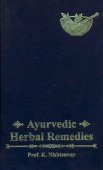Lam, Laṃ, Lām: 8 definitions
Introduction:
Lam means something in Buddhism, Pali, Hinduism, Sanskrit, Marathi, biology. If you want to know the exact meaning, history, etymology or English translation of this term then check out the descriptions on this page. Add your comment or reference to a book if you want to contribute to this summary article.
In Hinduism
General definition (in Hinduism)
Source: Wisdom Library: Hinduism“Laṃ” is the bīja-mantra for pṛthivi, or “earth”.
In Buddhism
Tibetan Buddhism (Vajrayana or tantric Buddhism)
Source: OSU Press: Cakrasamvara SamadhiLaṃ (लं) is the bīja associated with Lampāka, according to the Cakrasaṃvara-maṇḍala or Saṃvaramaṇḍala of Abhayākaragupta’s Niṣpannayogāvalī, p. 45 and n. 145; (Cf. Cakrasaṃvaratantra, Gray, David B., 2007).—The Cakrasaṃvara mandala has a total of sixty-two deities. [...] Three concentric circles going outward, the body, speech and mind wheels (kāya-vāka-citta), in the order: mind (blue), speech (red), and body (white), with eight Ḍākinīs each in non-dual union with their Ḍākas, "male consorts".
Associated elements of Subhadrā and Vajrabhadra:
Circle: vākacakra [=vākcakra?] (speech-wheel) (red);
Ḍākinī (female consort): Subhadrā;
Ḍāka (male consort): Vajrabhadra;
Bīja: laṃ;
Body-part: throat;
Pīṭha: Lampāka;
Bodily constituent: udara (stomach);
Bodhipakṣa (wings of enlightenment): prajñābala (power of wisdom).

Tibetan Buddhism includes schools such as Nyingma, Kadampa, Kagyu and Gelug. Their primary canon of literature is divided in two broad categories: The Kangyur, which consists of Buddha’s words, and the Tengyur, which includes commentaries from various sources. Esotericism and tantra techniques (vajrayāna) are collected indepently.
Biology (plants and animals)
Source: Google Books: CRC World Dictionary (Regional names)1) Lam in India is the name of a plant defined with Aristida depressa in various botanical sources. This page contains potential references in Ayurveda, modern medicine, and other folk traditions or local practices.
2) Lam in Pacific is also identified with Jatropha curcas It has the synonym Ricinus jarak Thunb. (etc.).
Example references for further research on medicinal uses or toxicity (see latin names for full list):
· The Gardeners Dictionary (1754)
· Taxon (1992)
· Supl. Gaz. Lit. Mexico (1794)
· Gardeners Dictionary, ed. 8 (1768)
· Grasses of Burma (1960)
· Journal of Ethnopharmacology (1990)
If you are looking for specific details regarding Lam, for example chemical composition, side effects, health benefits, pregnancy safety, extract dosage, diet and recipes, have a look at these references.

This sections includes definitions from the five kingdoms of living things: Animals, Plants, Fungi, Protists and Monera. It will include both the official binomial nomenclature (scientific names usually in Latin) as well as regional spellings and variants.
Languages of India and abroad
Marathi-English dictionary
Source: DDSA: The Aryabhusan school dictionary, Marathi-Englishḷāṃ (ळां).—or-
--- OR ---
ḷāṃ (ळां).—or -
Marathi is an Indo-European language having over 70 million native speakers people in (predominantly) Maharashtra India. Marathi, like many other Indo-Aryan languages, evolved from early forms of Prakrit, which itself is a subset of Sanskrit, one of the most ancient languages of the world.
Sanskrit dictionary
Source: Cologne Digital Sanskrit Dictionaries: Cappeller Sanskrit-English DictionaryLam (लम्).—only lalāma, enjoy (sexually).
Source: Cologne Digital Sanskrit Dictionaries: Monier-Williams Sanskrit-English DictionaryLam (लम्):—(= √ram; not in [Dhātupāṭha]; only [perfect tense] lalāma), to delight in, sport, enjoy sexually, [Harivaṃśa]
[Sanskrit to German]
Sanskrit, also spelled संस्कृतम् (saṃskṛtam), is an ancient language of India commonly seen as the grandmother of the Indo-European language family (even English!). Closely allied with Prakrit and Pali, Sanskrit is more exhaustive in both grammar and terms and has the most extensive collection of literature in the world, greatly surpassing its sister-languages Greek and Latin.
See also (Relevant definitions)
Starts with (+544): Lam bak, Lam iak, Lam ketukee, Lam la brten pa, Lam radhikanachan, Lam rim, Lam-chang, Lam-chengkruk, Lam-chiak, Lam-hawaitharak, Lam-karot-akhabi, Lam-ketukee, Lam-ketuki, Lam-khamen, Lam-numitlei, Lam-onk, Lam-radhika-nachom, Lam-sachikom, Lam-sebot, Lam-thabi.
Ends with (+2412): A-candra-arka-kshiti-sama-kalam, A-palakopalam, Aalam, Abalam, Abhijnanashakuntalam, Abilam, Acalacalam, Acalam, Acanamirtatailam, Acancalam, Acattalam, Accapallam, Accataiyalam, Acitalam, Acitorpalam, Acolam, Acuvapalam, Adabsalam, Adachalam, Adas musallam.
Full-text (+6722): Calacala, Pittala, Amula, Dalamala, Kalakula, Tadakaphala, Kevala, Kauvala, Kuhula, Vishakhala, Kutala, Mukhashthila, Asitotpala, Amshula, Langula, Udarila, Tanula, Pradhimandala, Vatashula, Vakchala.
Relevant text
Search found 58 books and stories containing Lam, Lāṃ, Ḷāṃ, Laṃ, Lām; (plurals include: Lams, Lāṃs, Ḷāṃs, Laṃs, Lāms). You can also click to the full overview containing English textual excerpts. Below are direct links for the most relevant articles:
Guhyagarbha Tantra (with Commentary) (by Gyurme Dorje)
Text 8.7-8 (Commentary) < [Chapter 8 (text and commentary)]
Text 7.3 (Commentary) < [Chapter 7 (text and commentary)]
Text 8.4 (Commentary) < [Chapter 8 (text and commentary)]
Mudrarakshasa (literary study) (by Antara Chakravarty)
2.15. Use of Suvadanā metre < [Chapter 4 - Employment of Chandas in Mudrārākṣasa]
Shat-cakra-nirupana (the six bodily centres) (by Arthur Avalon)
Taittiriya Upanishad Bhashya Vartika (by R. Balasubramanian)
The Agni Purana (by N. Gangadharan)
Chapter 71 - Mode of worshipping Gaṇeśa (gaṇeśapūjā)
Chapter 201 - Mode of worshipping Viṣṇu in a figure of nine compartments
Chapter 322 - The appeasing rite employing the mantra of the weapon of Paśupati
Rudra-Shiva concept (Study) (by Maumita Bhattacharjee)
16. Oblation to Soma and Rudra < [Chapter 3 - Rudra-Śiva in the Brāhmaṇa Literature]
Related products
